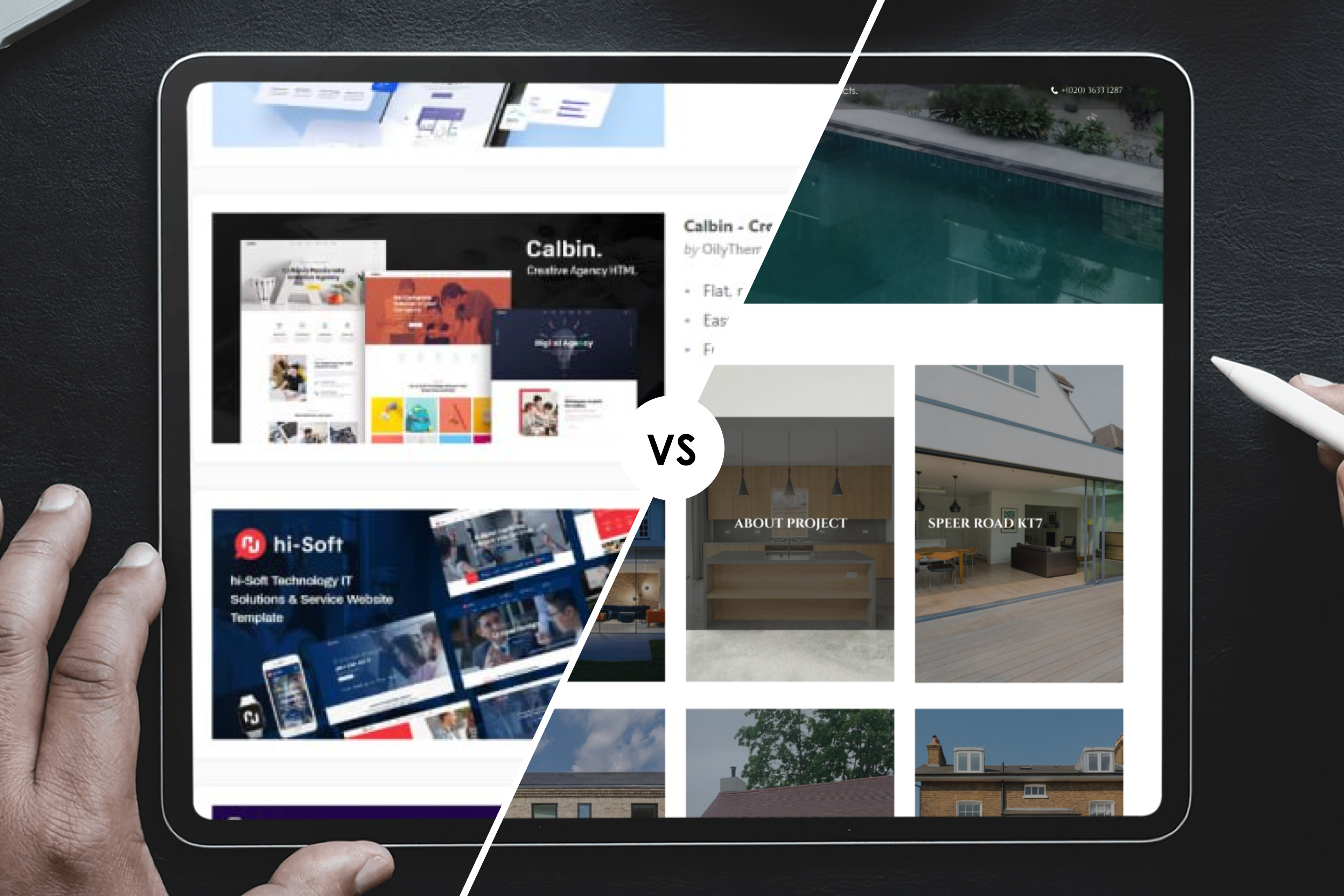Landing Page Design for Small Business: Best Expert Practices

A landing page is a specific web page designed to achieve a specific marketing objective, such as converting a visitor into a customer or lead. This page is usually separate from the main website and is focused solely on a single goal, such as making a sale, collecting leads, or building brand awareness.
Landing page design for small business is crucial to make a big impact on their online presence and sales. A well-designed landing page can help small businesses to increase their revenue and growth, by attracting more visitors, and converting them into paying customers.
4 Basic Principles of Landing Page Design
A successful landing page is one that is developed with a specific goal in mind and is optimized for conversion. To accomplish this, small business owners should keep four crucial landing page design ideas in mind.
A. Keep it Simple and Straightforward
The most important aspect of landing page design is to keep things as simple as possible. A landing page should be straightforward to understand, with a clear message and an easy-to-navigate structure. Avoid utilizing excessive text, superfluous visuals, and perplexing navigation. Instead, concentrate on making the website basic and easy to read and navigate, with clear call to action and a simple, clean style.
B. Have a Clear Call-to-Action
A landing page should always have a clear call-to-action (CTA), which is the action that you want the visitor to take on the page. This could be to make a purchase, sign up for a newsletter, or download an e-book. The CTA should be prominently displayed and easy to find and should stand out from the rest of the page.
C. Make Sure the Design is Visually Appealing
A landing page’s success depends on its design. The page should have a polished appearance that is aesthetically pleasing for you and, most importantly, your users. Moreover, you will make the website more appealing by adding high-quality graphics and photographs, and by selecting colors that are consistent with your brand identity.
D. Make it mobile Friendly
In today’s world, it’s critical to make sure that your landing page is mobile-responsive. This means that the page should be optimized for display on all devices, including smartphones and tablets. A mobile-responsive landing page will ensure that your visitors have a positive experience, no matter what device they use to access your page.
Ideal Length for Landing Pages
A landing page’s length is an important consideration for small businesses looking to optimize their pages for conversion. An overly long landing page will overwhelm users with information and content, while a short one may not be enough for the user to make a purchase.
The ideal length for a landing page will depend on several factors, including the goals of the page and the target audience. In general, the ideal length for a landing page is between 500 to 1500 words. This length provides enough space for the business to clearly communicate its message and for the visitor to learn about the product or service being offered. However, this length may vary depending on the complexity of the product or service and the target audience. For example, short landing pages are great for simple products, while complex and expensive services require more content and page sections.
A. When to Use Long Landing Pages?
Long landing pages are best used when a business wants to provide a detailed explanation of its product or service, or when it wants to build trust with the visitor. For example, a business that is selling a complex technology product may use a long landing page to provide in-depth information about the product’s features, benefits, and guarantees.
B. When to Use Short Landing Pages?
Short landing pages, on the other hand, are best used when the business wants to get a quick response from the visitor, such as making a purchase or filling out a form. For example, a business that is offering a discount for a limited time may use a short landing page to get the visitor to take action before the offer expires.
Optimizing Your Landing Page for Your Small Business
Designing a landing page for a small business can be a challenging task, but it’s essential to get it right to drive conversions. Here are some tips for optimizing your landing page for your small business.
1. Conduct Market Research
Conducting market research is a critical first step in optimizing your landing page for your small business. This research will help you understand your target audience, their needs, and what motivates them to take action. With this information, you can create a landing page that speaks directly to your target audience and motivates them to take action.
2. Define Your Target Audience
Knowing your target audience is key to optimizing your landing page for your small business. You need to understand who your target audience is, what their pain points are, and what motivates them to take action. This information will help you create a landing page that resonates with your target audience and drives conversions.
3. Know Your Goals for the Landing Page
Defining your goals for the landing page is another critical step in optimizing it for your small business. Whether you want to generate leads, make a sale, or simply get visitors to sign up for your newsletter, having a clear goal in mind will help you create a landing page that is optimized for your specific needs.
4. Personalize the Landing Page
Personalizing your landing page for your target audience is another way to optimize it for your small business. This can include using the visitor’s name, personalizing the content to their specific needs, and including images or videos that are relevant to their interests. Personalizing your landing page can help build trust with your target audience and drive conversions.
10 Elements of a High-Converting Landing Page
Top 5 Content & UX Elements
1. Headline: The headline is the first thing that a visitor sees when they land on your page, so it’s crucial to make sure it’s eye-catching, compelling, and relevant. Your headline should clearly communicate what your business offers and what sets you apart from your competition. Keep it short, simple, and to the point, and make sure it’s consistent with the rest of your page.
2. Subheadlines: The subheadlines is a supporting element to the headlines and should provide more context and detail. They must engage the visitor and keep them interested by powering up the main headline.
3. Images and Videos: Images and videos can make a landing page more visually appealing and help break up the text. They should be used to enhance the message of the page and not distract from it. The images should be high-quality and relevant to the content, and videos should be short and to the point.
4. Navigation: The navigation of a landing page should be easy to use. It should not take away from the main goal of the page and should only include links that are relevant to the visitor. Well-designed navigation can improve the user experience and increase the likelihood of conversion.
Top 5 Conversion Elements
5. Unique value proposition: A unique value proposition (UVP) is a statement that clearly and concisely communicates the benefits and differentiators of your product or service. Your UVP should be front-and-center on your landing page so that visitors understand why they should choose you over your competition. Make sure your UVP is easy to understand and memorable, and keep it short and to the point.
6. Call-to-Action: The call-to-action (CTA) is an essential part of your landing page, and it should be clear, concise, and actionable. Your CTA should be prominentl and easy to find, and it should clearly communicate what the visitor should do next. Some common CTAs include “Sign Up Now,” “Download Now,” and “Start Now”
7. Social proof: Social proof is the idea that people are more likely to take a desired action if they see others doing the same. You can use social proof to increase the credibility and perceived value of your product or service. Some common forms of social proof include customer testimonials, case studies, reviews, and social media followers.
8. Simple and clear form: If your landing page includes a form, make sure it’s simple, clear, and easy to fill out. Only ask for the absolutely necessary information, and keep the form short and to the point. Also, make sure the form is visually appealing, and consider using color, contrast, and other design elements to make it stand out.
9. Testimonials: Testimonials from satisfied customers can be powerful in building trust and credibility for your small business. They should be real, specific, and relevant to your target audience. Testimonials can be in the form of quotes, images, or even video testimonials.
What NOT to Use on Your Landing Page
A. Distracting Elements: Avoid including elements that distract visitors from the main goal of the page. This can include animations, pop-ups, and other attention-grabbing elements that take away from the message you’re trying to convey.
B. Unnecessary Information: Keep the information on your landing page relevant and to the point. Don’t include information that’s not directly related to the product or service you’re offering. This will help visitors focus on the important details and make it easier for them to make a decision.
C. Slow-Loading Elements: Make sure that your landing page loads quickly, as slow-loading pages can be frustrating for visitors and may cause them to leave before they’ve had a chance to convert. Minimize the use of large images, videos, and other elements that may slow down your page’s loading time.
By avoiding these elements, you can ensure that your landing page is effective and focused, making it easier for visitors to take the desired action.
Structuring Your Landing Page
1. Above-the-fold content: The “above-the-fold” area of your landing page is part of the page that is visible to the user without scrolling. This area is critical for catching the user’s attention and guiding them toward taking the desired action. The headline, sub-headline, and call-to-action should all be prominently displayed above the fold.
2. Content hierarchy: The content on your landing page should be structured in a way that leads the user toward the desired action. This is achieved by using headings, subheadings, and bullet points to break up the content and make it easier to read. The content should be organized logically and coherently, starting with the most important information and working down to the least important details.
3. Use of White Space: White space, or negative space, is an important aspect of landing page design. It helps to create a sense of balance and makes the page look less cluttered and more organized. By using white space, you can guide the user’s eye to the key elements of your page and make them stand out.
The Most Important Thing in Landing Page Design for Small Business
When it comes to landing page design, several key elements contribute to its success. However, there is one thing that stands out above all others – the clear call to action. A call-to-action is a button or link that prompts the visitor to take some sort of action, such as making a purchase, filling out a form, or downloading a resource.
Prominent Call-to-action: Having a clear and prominent call to action is crucial to the success of your landing page. It should be the focus of the page and stand out visually so that visitors can’t miss it. The call-to-action should be specific and include an action verb, such as “Sign Up Now” or “Download Our Ebook.”
Visual Consistency: Another important aspect of landing page design is making the page visually appealing. Visitors are more likely to stick around and engage with your content if the design is aesthetically pleasing. This includes the use of appropriate colors, images, and typography that align with your brand identity.
Straightforward Design: Finally, having a straightforward design is also critical. Visitors should be able to easily navigate the page and understand what it is you’re offering. Avoid clutter and keep the page focused on the most important information. By following these design principles, you’ll be well on your way to creating a landing page that drives conversions and grows your small business.
Biggest Landing Page Design Mistakes
Landing pages play a crucial role in the success of a small business and it’s important to avoid common design mistakes that can negatively impact the performance of the page. Here are some of the biggest mistakes to watch out for:
A. Cluttering the page with too much information: This can make the page appear overwhelming and confusing to visitors, causing them to quickly leave the page. To avoid this, make sure to include only the most relevant information and avoid including any unnecessary elements.
B. Having a confusing or vague call-to-action: The call-to-action is the main purpose of the landing page and it should be clear and concise. Visitors should know exactly what action they are expected to take when they arrive on the page.
C. Poor website performance: A slow-loading landing page can quickly turn visitors away. Make sure to optimize images, videos, and other elements to ensure the page loads quickly.
D. Not being mobile-responsive: With the increasing use of mobile devices, it’s important to make sure that your landing page is optimized for mobile viewing. This means that the page should be easily accessible and readable on any device, from smartphones to tablets.




